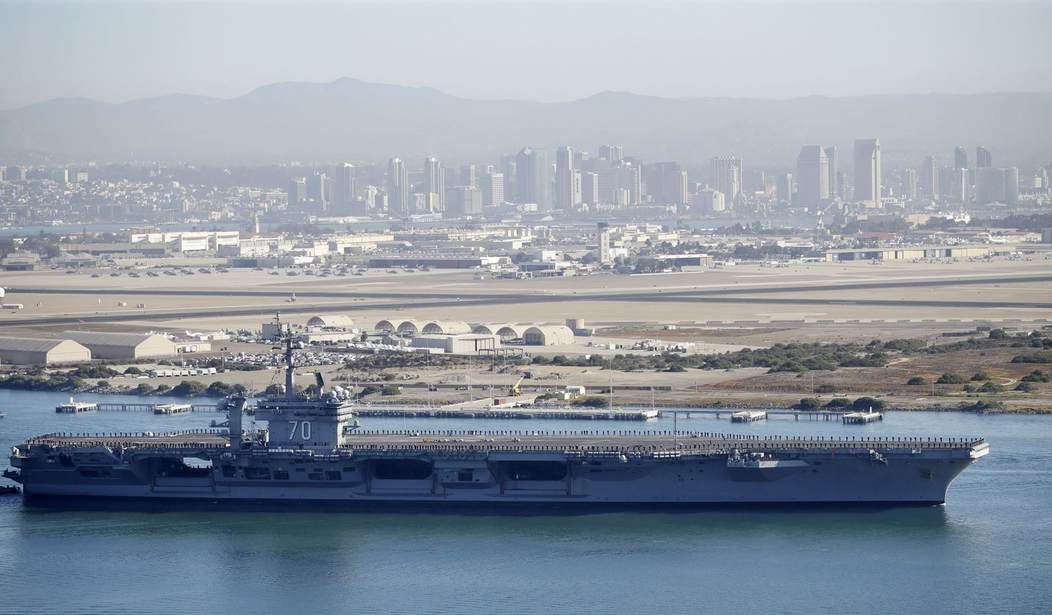Editor's note: This piece was coauthored by Colonel Patrick J. Gough, USMC (Retired)
San Diego is a major strategic stronghold critical to U.S. national security. As such, this also makes it a preeminent military target for America’s geopolitical adversaries in China, Russia, Iran, North Korea, and non-state terrorist organizations.
We have previously authored three position pieces detailing the merit of a second opening to San Diego Bay in order to sharply diminish the viability of this targeting. These were written from the perspectives of the 1) U.S. Navy and U.S. national security, 2) environment, and 3) regional economic boom potential.
Today, we are presenting a fourth position from the perspective of the potential impact on the deployment and sustainability of the U.S. Marine Corps, access to naval repair facilities, and the all-important logistics of sustaining the U.S. Navy and U.S. Marine Corps.
The Marine Corps’ deployment vulnerability issue has largely gone unnoticed thus far, but it is of paramount importance.
For the first three decades of the 20th century, the U.S. Navy was content with Pearl Harbor as the forward operating base for a portion of the U.S. Pacific Fleet. That posture was sufficient until the rapid expansion of the Imperial Japanese Empire in the 1930’s. This expansion prompted the repositioning of the vast majority of the Pacific Fleet to Pearl Harbor, with its single point of entry and exit.
By making this move, the vulnerability to the Pacific Fleet, amassed at Pearl Harbor, increased exponentially. And yet, the U.S. Navy was reluctant to accept this increase in vulnerability and continued to underestimate Japan’s capability to strike Hawaii in any meaningful manner.
Recommended
And we all know what happened soon thereafter on December 7, 1941.
In 2022, the U.S. Navy and U.S. national security apparatus is again failing (or refusing) to recognize another massive evident vulnerability to the Pacific Fleet — this time in San Diego. The current situation is eerily reminiscent of Pearl Harbor during the last century, especially given the rise of several powerful potentially belligerent actors as well as San Diego Bay having a restrictive single point of entry and exit.
This single bay exit makes San Diego a strategic target. The associated risk mandates mitigation and a viable solution is a second entry / exit channel.
If an aggressor (or group of aggressors) succeeded in blocking San Diego's single bay entrance / exit (not difficult to do), the U.S. Navy will be significantly hamstrung, commercial shipping will be cut off, and America's ability to project power away from its shores will be drastically diminished.
A blocked bay exit would literally shut down the operational abilities of all naval assets at the San Diego Naval Base, NAS North Island, the Submarine Base at Point Loma, as well as San Diego's naval repair facilities.
Repair facilities are a true force multiplier to any navy, and a lack of access to such could be crippling to the U.S. Navy.
Think about the turnaround time for the USS Yorktown in World War II between the damage it received during the Battle of the Coral Sea and the commencement of the Battle of Midway. Repairs to the Yorktown that could have taken weeks or months to complete only took 72 hours to complete at Pearl Harbor. Yorktown's presence at the Battle of Midway turned the tide of this battle, and this battle turned the tide of the war in the Pacific. Further, if the USS Nevada had not been intentionally run aground to avoid being sunk in Pearl Harbor's single entrance / exit on December 7th, things might be significantly different in the world today.
If our naval force (Navy and Marine Corps) can’t get to the fight…they are rendered irrelevant. If they are in the fight and can’t get repaired or resupplied and reinforced to sustain the fight…they will lose the fight.
We must also remember that the largest of the three U.S. Marine Corps Expeditionary Forces is split among regional bases and stations at Camp Pendleton, MCAS Miramar, MCAS Camp Pendleton, MCAS Yuma, Marine Corps Air Ground Combat Center 29 Palms, and Marine Logistics Base Barstow.
As such, a great deal of the Marine Corps Expeditionary Force‘s personnel and equipment must deploy from the San Diego area.
While much of the rolling stock supporting the Marine Expeditionary Force’s deployments can be accessed from the Maritime Prepositioned Ships currently deployed around the globe or in Norwegian caves, massive amounts of Marine ground, aviation, and logistics support must come via road and rail to the San Diego Naval Bases to be loaded aboard amphibious ships, aircraft carriers, and Roll-On / Roll-Off ships. Use of other coastal ports in California can serve as alternative deployment harbors if San Diego Bay is compromised, but each has its own unique set of limitations making them significantly less capable than San Diego Bay.
Let’s consider the ramifications of a massive Carnival Cruise ship or Dole Foods container ship being sabotaged (or hit by hypersonic missiles) and sunk in the channel entrance / exit to San Diego Bay:
All U.S. Navy ships in port (note that 50+ ships are homeported here) will be unable to exit for long periods of time until the channel is cleared — this includes submarines, amphibious assault ships, littoral combat ships, aircraft carriers, et al. Likewise, all ships and submarines stuck in port will be rendered static targets for follow-on hypersonic missile strikes.
Navy ships at sea heading to San Diego for restocking or repair will suddenly need to re-route elsewhere. Navy repair and retrofit shipyards will be rendered useless. And the deployment of the largest Marine Corps Expeditionary Force in the world will be significantly impacted.
The concerns associated with the San Diego Bay single entry / exit have been identified as significant national security risks since the first quarter of the 20th century, yet they continue to be ignored.
Due to significantly capable and longer range weapons, there is a strategic urgency that was not previously present — Russia has invaded Ukraine launching the largest European land war since World War II; China is expanding in the South China Sea and is eyeing Taiwan; Iran is fighting proxy wars against Israel and elsewhere in the Middle East; North Korea is testing and launching ICBMs over the Sea of Japan; and currently unstoppable hypersonic missiles are becoming the mainstay in the arsenals of potential enemies.
The risk to San Diego and the deployment of the U.S. Pacific Fleet and the U.S. Marine Corps as well as the sustainability of our naval expeditionary forces is undeniable.
The integrity and viability of the U.S. Navy bases in San Diego is not only of critical importance to America, but also to the entire free world. Think about the world without the U.S. Navy and U.S. Marines fully operational and capable of projecting U.S. national military power in order to keep the peace. In short order, belligerents all around the world could soon be on the move.
As such, San Diego and the U.S. Pacific Fleet are a global concern and must be protected at all costs.
We can not continue to stand idle and admire the San Diego Bay entry / exit problem any longer. Our single bay entrance / exit is a vulnerability that invites attack. By removing this significant temptation, we keep the peace.
The time for a second operational opening to San Diego Bay is now.
Semper Fi.
George Mullen is spearheading the Second Opening to San Diego Bay Project and is a principal of StudioRevolution.com in downtown San Diego.
Patrick "Paddy" Gough is a a retired USMC Colonel with multiple command and senior staff assignments at MCP Camp Pendleton, MCAS Camp Pendleton, MCAS Yuma, and MCAS Miramar. He is currently CEO of the company 55 Group, LLC.























Join the conversation as a VIP Member